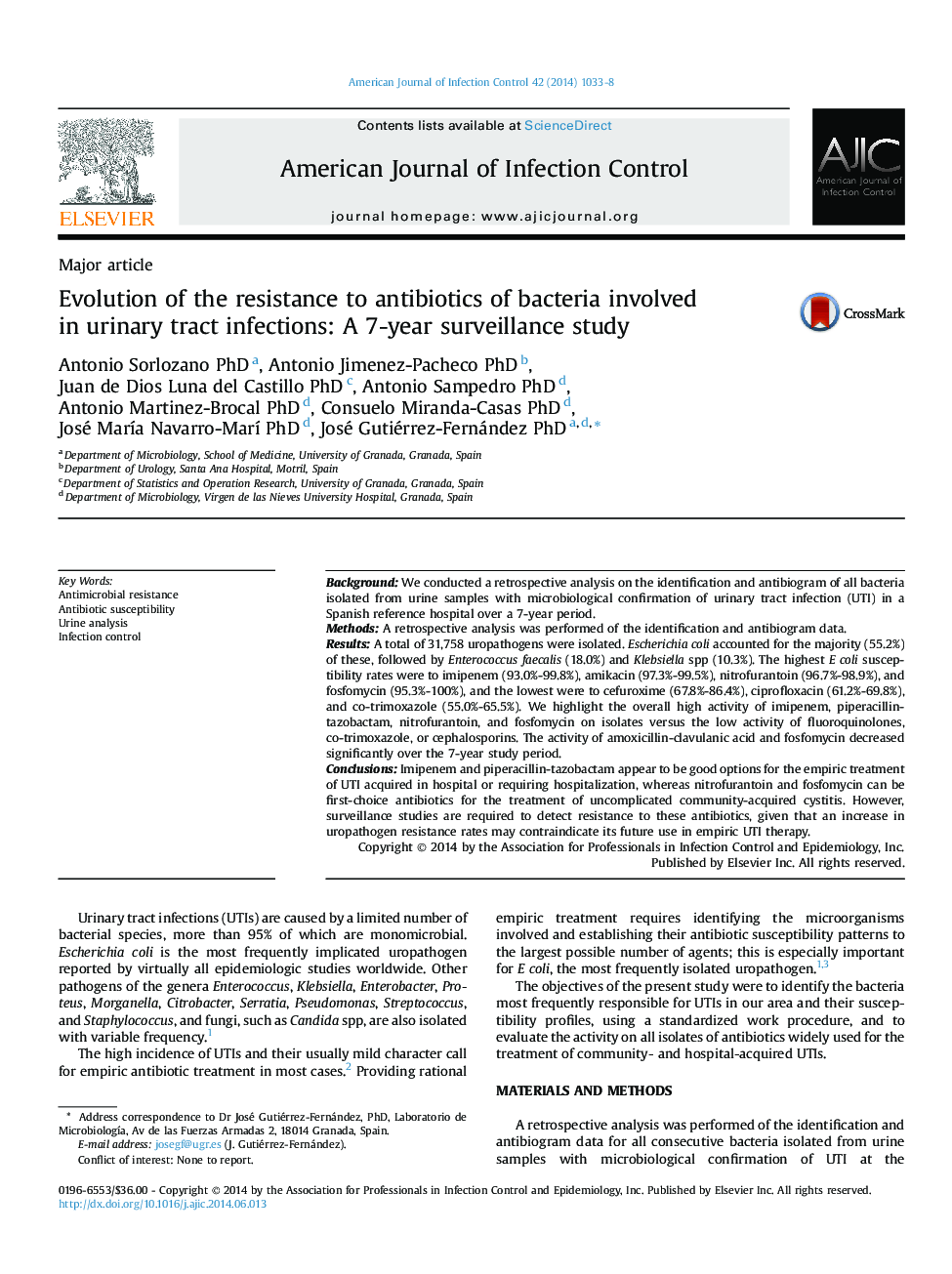| Article ID | Journal | Published Year | Pages | File Type |
|---|---|---|---|---|
| 2636889 | American Journal of Infection Control | 2014 | 6 Pages |
BackgroundWe conducted a retrospective analysis on the identification and antibiogram of all bacteria isolated from urine samples with microbiological confirmation of urinary tract infection (UTI) in a Spanish reference hospital over a 7-year period.MethodsA retrospective analysis was performed of the identification and antibiogram data.ResultsA total of 31,758 uropathogens were isolated. Escherichia coli accounted for the majority (55.2%) of these, followed by Enterococcus faecalis (18.0%) and Klebsiella spp (10.3%). The highest E coli susceptibility rates were to imipenem (93.0%-99.8%), amikacin (97.3%-99.5%), nitrofurantoin (96.7%-98.9%), and fosfomycin (95.3%-100%), and the lowest were to cefuroxime (67.8%-86.4%), ciprofloxacin (61.2%-69.8%), and co-trimoxazole (55.0%-65.5%). We highlight the overall high activity of imipenem, piperacillin-tazobactam, nitrofurantoin, and fosfomycin on isolates versus the low activity of fluoroquinolones, co-trimoxazole, or cephalosporins. The activity of amoxicillin-clavulanic acid and fosfomycin decreased significantly over the 7-year study period.ConclusionsImipenem and piperacillin-tazobactam appear to be good options for the empiric treatment of UTI acquired in hospital or requiring hospitalization, whereas nitrofurantoin and fosfomycin can be first-choice antibiotics for the treatment of uncomplicated community-acquired cystitis. However, surveillance studies are required to detect resistance to these antibiotics, given that an increase in uropathogen resistance rates may contraindicate its future use in empiric UTI therapy.
